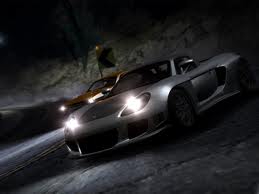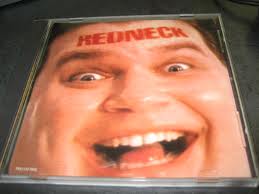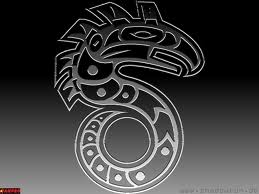[RELz] Really AEVWD - Thread #7
-

Haley Merkley - Posts: 3356
- Joined: Sat Jan 13, 2007 12:53 pm
Yes, because not everyone will be inclined to download the extra 30MB. If you want to make a wizard for that package separately, that's fine.
Okay. I'll make 2 Wizards, 1 with and 1 without QTPIII.
-

helliehexx - Posts: 3477
- Joined: Fri Jun 30, 2006 7:45 pm
Yes, because not everyone will be inclined to download the extra 30MB. If you want to make a wizard for that package separately, that's fine.
Agree, using bomrets normals and corepc vibrant collection qtp3 would be wasted HD space and bandwidth for me. For personal use I would have chopped out qtp3 if it was included.
-

Kanaoka - Posts: 3416
- Joined: Fri Jun 16, 2006 2:24 pm
I just read a few posts on the previous page that sort of referred to using Detailed Terrain as an alternative to QTP3, and I wanted to point out that Detailed Terrain uses QTP3's terrain textures. So if you're using DT you're kind of using QTP3 as well, unless you want to add alpha channels to some other set of terrain textures to make them DT-compatible.
-

Katie Pollard - Posts: 3460
- Joined: Thu Nov 09, 2006 11:23 pm
Agree, using bomrets normals and corepc vibrant collection qtp3 would be wasted HD space and bandwidth for me. For personal use I would have chopped out qtp3 if it was included.
Second on that, same setup for me. Q's is nice, but until I rebuild this rig...
@Palidoo:
Most of it is overwritten with Bomret's or Wiseman's, keeping normals which add the much needed detail to smaller textures, on my install. When I build the Dream Machine, I won't have to worry about texture size. WOOT!
-

Blaine - Posts: 3456
- Joined: Wed May 16, 2007 4:24 pm
@ Arthmoor
PM'd you with a link to the installation scripts. Two versions included: default and extra packages.
PM'd you with a link to the installation scripts. Two versions included: default and extra packages.
-

Emily abigail Villarreal - Posts: 3433
- Joined: Mon Aug 27, 2007 9:38 am
I used Bomret's normals before I eventually switched to QTP3. I actually waited a long time because everything looked good enough and I was afraid QTP3's colors wouldn't be the same (I was wrong thankfully). But I remember installing Detailed Terrain quickly after discovering it, not really reading about it in-depth, then re-installing Bomret's normals over what DT had installed, so I ended with QTP3's textures but with normal maps made to go with the vanilla textures. Things ended up looking pretty weird (though some textures and normals matched up decently here and there). I switched back to the vanilla textures and it wasn't until I decided to install QTP3 in full that I chose to experience the magic of Detailed Terrain. I don't know why there aren't versions of the vanilla terrain textures that are DT compatible, I suppose it wouldn't take too much time to incorporate alpha channels into the vanilla textures, though it is a pretty big project.
-

Gracie Dugdale - Posts: 3397
- Joined: Wed Jun 14, 2006 11:02 pm
Since DT only deals with terrain textures it doesn't really have much impact on RAEVWD.
-

Joey Avelar - Posts: 3370
- Joined: Sat Aug 11, 2007 11:11 am
Provided there is no reduction in visual quality, which is one of RAEVWD's goals. I'm willing to take a look at some examples to compare, sure.
You may find though that the reduction techniques in Milshape 3D are more useful than you realize.
You may find though that the reduction techniques in Milshape 3D are more useful than you realize.
There will be no visual quality loss, besides the deleted vertex colors which (by your process) deletes them anyway...
You have already seen a few examples in other threads.
If you want more examples, yeah, ok , whatever...
I also understand what you're doing to the meshes in Milkshape 3D. The same can be done with blender or most other modeling programs.
The point being is how the programs do it, isn't exactly... ummm right....
If only the program could only think logically, just as a mesher does....... *dreams*
Does fixing the meshes correctly take time, Sure it does, just as developing a new mesh takes time.
'butchering' a mesh takes but mere minutes. Scripted 'butchering' takes less.
I've spent countless hours fixing and hand optimizing meshes for better cities.
Has the countless hours I spent not only made my/others game playable "without that needed item dropping through the floor gone forever", and increasing FPS. Sure! (at least from my benchmarks. I know not everyone has a top-o-the-line Graphics card, or at least one that will tame oblivion)
Anyway, I would like to make one suggestion to your folder structure before going full bore or whatever.
In the structure there should be two 00 Core folders for your project.
00 Core Vanilla Meshes (the ones already provided in a default install)
00 Core The Rest of the Meshes (the other 'butchered' or changed meshes that have been added, plugin dependent)
This would make thing A LOT easier.
Extra Ideas, comments?
-

joseluis perez - Posts: 3507
- Joined: Thu Nov 22, 2007 7:51 am
Whether its right or not, most of us just don't have the time to deal with it, nor the patience to handle Blender's archaic interface. I found a method that works, and works well, and that's how I'll continue to do things for any other meshes which may need reduction for VWD purposes.
I'm not saying I don't appreciate the offer, I'm just not pleased with your approach to the matter. You are still trying to make it out like I've done some hideous wrong and that only your superior greatness can fix it. That doesn't come across on screen as anything more than a massive insult to the efforts I've already put into the work. Even with automated method it took weeks to get through everything in the package.
As far as folder structure, I'm not changing that. It's going to stay like it is because it's organized in the most logical way to choose how people want to set things up.
I'm not saying I don't appreciate the offer, I'm just not pleased with your approach to the matter. You are still trying to make it out like I've done some hideous wrong and that only your superior greatness can fix it. That doesn't come across on screen as anything more than a massive insult to the efforts I've already put into the work. Even with automated method it took weeks to get through everything in the package.
As far as folder structure, I'm not changing that. It's going to stay like it is because it's organized in the most logical way to choose how people want to set things up.
-

Emily Shackleton - Posts: 3535
- Joined: Sun Feb 11, 2007 12:36 am
Whether its right or not, most of us just don't have the time to deal with it, nor the patience to handle Blender's archaic interface. I found a method that works, and works well, and that's how I'll continue to do things for any other meshes which may need reduction for VWD purposes.
I'm not saying I don't appreciate the offer, I'm just not pleased with your approach to the matter. You are still trying to make it out like I've done some hideous wrong and that only your superior greatness can fix it. That doesn't come across on screen as anything more than a massive insult to the efforts I've already put into the work. Even with automated method it took weeks to get through everything in the package.
As far as folder structure, I'm not changing that. It's going to stay like it is because it's organized in the most logical way to choose how people want to set things up.
I'm not saying I don't appreciate the offer, I'm just not pleased with your approach to the matter. You are still trying to make it out like I've done some hideous wrong and that only your superior greatness can fix it. That doesn't come across on screen as anything more than a massive insult to the efforts I've already put into the work. Even with automated method it took weeks to get through everything in the package.
As far as folder structure, I'm not changing that. It's going to stay like it is because it's organized in the most logical way to choose how people want to set things up.
Sorry this is a bit of a understanding but, here let me try to explain...
I am not trying to make anything out but this:
Blender really has nothing to do with optimizing, but a few things.
You have not done anything hideously wrong with the meshes.
They could be optimized better.
Nor am I the only one that can fix them.
Anyone with a knowledge of modeling I hope would be inclined to help you with your project other than myself.
I am not trying to insult you, but it is helpful to know that I have understood you correctly and am still willing to help.
I am not GOD. Nor am I Arthmoor. I am Metalio Bovinus.
Metalio Bovinus is not perfect.
I only have the time that is given to me and I hope that it was/will be a worth-while effort.
about Folder Structure: OK, whatever, that is fine also.
If there is something further about my approach to trying to help this project that you would like to speak of, Please send me a PM.
Metalio Bovinus
-

Ashley Hill - Posts: 3516
- Joined: Tue Jul 04, 2006 5:27 am
Here's a random collection of BYFFI'd meshes Arthmoor for your and everyone else's inspection.
http://www.4shared.com/file/k0DYCwGF/BYFFI_Meshes_Preview.html
Mooo
http://www.4shared.com/file/k0DYCwGF/BYFFI_Meshes_Preview.html
Mooo
-

Pete Schmitzer - Posts: 3387
- Joined: Fri Sep 14, 2007 8:20 am
Does any of this really matter for VWD objects? Arthmoor's optimizations are for a specific purpose: seeing an object from afar. You don't need a lot of the detail in the mesh for that. Your optimizations make sense for stuff that the player is actually going to interact with, but I don't understand doing that for VWD objects.
-

kennedy - Posts: 3299
- Joined: Mon Oct 16, 2006 1:53 am
Took a quick look at the samples. There's no need to include the full size meshes since RAEVWD is not concerned with those. I don't mind obviously, provided they're better performing than the originals, but it means nothing for this project. Some of this may be of use for OCC/OCR though if the optimizations are better than what Sjors did for the ones I use there.
I don't see any difference in the number of triangles on most of these, but several have slashed the vertex count nearly in half. I'm wondering why exactly PyFFI on its own can't deal with this since it indicates a lot of duplicate info IMO. Remains to be seen what it does for frame rates, I suppose that will need to be tested.
For full size meshes I think the project most likely to benefit from this would be AWLS.
I don't see any difference in the number of triangles on most of these, but several have slashed the vertex count nearly in half. I'm wondering why exactly PyFFI on its own can't deal with this since it indicates a lot of duplicate info IMO. Remains to be seen what it does for frame rates, I suppose that will need to be tested.
For full size meshes I think the project most likely to benefit from this would be AWLS.
-

Chloé - Posts: 3351
- Joined: Sun Apr 08, 2007 8:15 am
Does any of this really matter for VWD objects? Arthmoor's optimizations are for a specific purpose: seeing an object from afar. You don't need a lot of the detail in the mesh for that. Your optimizations make sense for stuff that the player is actually going to interact with, but I don't understand doing that for VWD objects.
Many projects will benefit for a default mesh say having 5000 verts reduced to say 2500 or 3000 or so.
Took a quick look at the samples. There's no need to include the full size meshes since RAEVWD is not concerned with those. I don't mind obviously, provided they're better performing than the originals, but it means nothing for this project. Some of this may be of use for OCC/OCR though if the optimizations are better than what Sjors did for the ones I use there.
I don't see any difference in the number of triangles on most of these, but several have slashed the vertex count nearly in half. I'm wondering why exactly PyFFI on its own can't deal with this since it indicates a lot of duplicate info IMO. Remains to be seen what it does for frame rates, I suppose that will need to be tested.
For full size meshes I think the project most likely to benefit from this would be AWLS.
I don't see any difference in the number of triangles on most of these, but several have slashed the vertex count nearly in half. I'm wondering why exactly PyFFI on its own can't deal with this since it indicates a lot of duplicate info IMO. Remains to be seen what it does for frame rates, I suppose that will need to be tested.
For full size meshes I think the project most likely to benefit from this would be AWLS.
Right, no need for your project for the full meshes, but I included them just for show in case you wanted something "solid". Anyway....
-

Laura Tempel - Posts: 3484
- Joined: Wed Oct 04, 2006 4:53 pm
Oh, I see. Well why don't you release these as a modder's resource? It does sound like they could be quite useful for a number of mods.
-

Bryanna Vacchiano - Posts: 3425
- Joined: Wed Jan 31, 2007 9:54 pm
Oh, I see. Well why don't you release these as a modder's resource? It does sound like they could be quite useful for a number of mods.
I Highly appreciate that enthusiasm, SPREAD IT!
To meshers the far corners of the earth.
Please. I can't do it all.
BTW IT is a modder's resource. When I get a reasonable amount I will release it as so. Just trying to prevent repetitive work here...
:)
Mooo
-

Rob Davidson - Posts: 3422
- Joined: Thu Aug 02, 2007 2:52 am
Totally, I don't see why you couldn't do as Andalybay suggests. Give a release. Mayhap, it could have been presented in a different way? But that is not what I am commenting on. If Arthmoor sees a possible performance resource, I say present it fully. Give the examples to testers. See what the masses have as an effect?
-

Danielle Brown - Posts: 3380
- Joined: Wed Sep 27, 2006 6:03 am
Oh and what is "Byffi"? and wow...that 4share site sox for speed. 14kb/sec? really? I get 4.8mb on a regular basis from any number of sites.
-

Minako - Posts: 3379
- Joined: Sun Mar 18, 2007 9:50 pm
Totally, I don't see why you couldn't do as Andalybay suggests. Give a release. Mayhap,......
Mayhap, others will learn to mesh and join the force. Mayhap moto?
-

Cartoon - Posts: 3350
- Joined: Mon Jun 25, 2007 4:31 pm
Mayhap, I just FINALLY d/l your examples...jeesh that took a minute!
-

Sheeva - Posts: 3353
- Joined: Sat Nov 11, 2006 2:46 am
@ 160 kb/ min whatever. thats what I get.
Anyway take a good 4-12 hours to look at and review (a) mesh. Then get back to me. I would appreciate your feedback.
icaugatewall01.nif
Anyway take a good 4-12 hours to look at and review (a) mesh. Then get back to me. I would appreciate your feedback.
icaugatewall01.nif
-

loste juliana - Posts: 3417
- Joined: Sun Mar 18, 2007 7:37 pm
I suggest you create a new thread for this and stop hi-jacking Arthmoor's thread. If Arthmoor likes your meshes he can look at adding them, but I fail to see what this has to do with RAEVWD. Personally I'm quite happy with Arthmoor's meshes, btw.
-

DAVId Bryant - Posts: 3366
- Joined: Wed Nov 14, 2007 11:41 pm
As has been said, if you're up for doing more I'm not going to object or refuse, but it does look like you're planning to take this further than the scope of RAEVWD and should probably open your own thread for it.
I will obviously want to test anything offered for inclusion in an RAEVWD update though.
I will obviously want to test anything offered for inclusion in an RAEVWD update though.
-

Emmie Cate - Posts: 3372
- Joined: Sun Mar 11, 2007 12:01 am
I suggest you create a new thread for this and stop hi-jacking Arthmoor's thread. If Arthmoor likes your meshes he can look at adding them, but I fail to see what this has to do with RAEVWD. Personally I'm quite happy with Arthmoor's meshes, btw.
Fine. Enough. Unless asked a question, I will not answer.
Feel free Arthmoor to ask further questions by PM. I will contact you when necessary about what I have to offer.
No need to clutter your thread.
-

Mariana - Posts: 3426
- Joined: Mon Jun 12, 2006 9:39 pm
